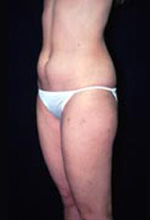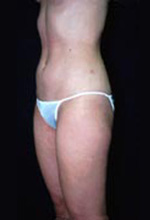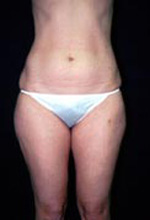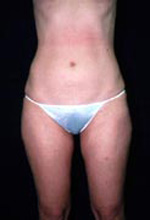Liposuction
Liposuction
Exercise and diet can help make you healthy, as well as help you look lean and muscular. For some individuals, however, it does not always remove those stubborn LFD’s (localized fat deposits). Every individual’s fat distribution and body shape is genetically determined. What this means is that often no amount of diet and exercise will remove these stubborn fat deposits. Even if the individual is at an adequate body weight, they will still posses areas of excess fat. Liposuction is a procedure that can remove fat and fat cells, thus sculpting the body and doing what diet and exercise alone could not. Liposuction is one of the most common cosmetic procedures performed in the United States today. However, even though liposuction is designed to remove fat, it does not replace or serve as a substitute for good diet and exercise.
Lipoplasty, commonly known as liposuction, is a common surgical procedure that removes deposits of excess fat from specific areas of the body, face or neck. Liposuction can be used to slim the hips, thighs, flatten the tummy, shape the calves and ankles or eliminate a double chin.
The best candidates for liposuction are:
- Men and women of normal weight whom mainly want to improve their body shape and contours.
- People with fat deposits that are “trouble areas” where exercise and diet seem not to have any effect.
- People with good elasticity in their skin, so when the fat is removed, they will achieve a smooth appearance.
The areas that liposuction can have the greatest effect on are the abdomen and waist area, the arms, back chin, neck, hips, buttocks, thigh ankles, calves and inner knees.
Patients of any age can undergo the procedure, but those who have greater skin elasticity will achieve the smoothest end result.
During the liposuction procedure, one or more incisions are made near the area to be treated. When possible, the incisions are made within the fold or natural creases in skin. Your doctor will then insert a small hollow tube called a cannula through the incision where he will then penetrate the underlying fat. The cannula is connected to a flexible tubing and suction pump. Your doctor then moves the cannula back and forth thought the fat, vacuuming the fat out through the tube.
The procedure is very common with thousands of patients undergoing the procedure each year with no major complications. However the possibility of risk occurring is always associated with surgery. In rare cases the liposuction procedure has caused severe trauma, particularly when multiple or very extensive areas are suctioned at one time. Other possible complications include fluid accumulation and injury to the skin. Sometimes asymmetry or unevenness may require further treatment.
There are various fat removal techniques available. There is the tumescent technique, in which the fat is pre-injected with a solution of salt water, local anesthetic and small amounts of adrenaline. Another type of procedure is the ultrasound assisted lipoplasty or UAL. This is a two-step procedure that uses ultra sound waves for energy, and liquefies the fat, which is then suctioned out. There are more techniques available, during your consultation, be sure to ask your doctor for more information about the various fat removal techniques.
| Before | After | Before | After |
 |
 |
 |
 |
LiposuctionDescription: 37 year old mother of 4 yr. old son wished improvement of areas that just would not improve despite dieting and exercise. Her goals of being ‘more comfortable in shorts, bathing suit , and greater comfort being undressed with her husband’ were accomplished. M.D. is 5’5″ tall and weighed 130 lb. before and 130 lb. after. Amount of fat removed: 1300 cc in total (250 cc is about 1 cup). 300 cc abdomen (stomach), 175 cc right hip, 150 cc left hip, 200 cc right outer thigh, 175 cc left outer thigh, 150 right inner thigh, 150 cc left inner thigh. ‘After’ photographs taken 4 months 1 week after surgery. |
|||
